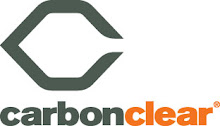Reuters reports that delegates at the United Nations Environment Program conference in Montreal reached agreement last Friday to speed up the elimination of hydrochlorofluorocarbons (HCFCs), a powerful greenhouse gas. A tonne of HCFCs has 5,000 to 8,000 times as much global warming impact as a tonne of carbon dioxide, so phasing out these chemicals can make a big impact.
HCFCs are used as a refrigerant in air conditioners, refrigerators and other cooling equipment. They became popular after the 1987 Montreal Protocol, as a substitute for chemicals that had a more damaging effect on the ozone layer. As I mentioned in a blog post last year, one of the unintended consequences of the Montreal Protocol was the more widespread use of chemicals that contribute to global climate change.
Last Friday's agreement gives developed countries until 2010 to reduce HCFC emissions by 75% and phase them out completely by 2020. Developing countries, meanwhile, have agreed to a 10% cut by 2015, with a gradual phase-out by 2030. The phase-out would likely reduce global greehouse gas emissions by several billion tonnes.
This is great news. Eliminating HCFCs is by itself not enough to tackle climate change - after all there's no signle solution. But this is a useful addition to our collective toolkit. The Carbon Clear team is committed to finding the best set of tools to help clients control their carbon impact.
(Back to Carbon Clear homepage)

